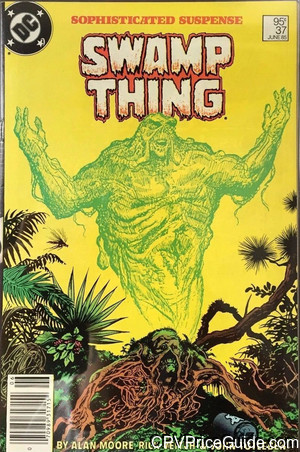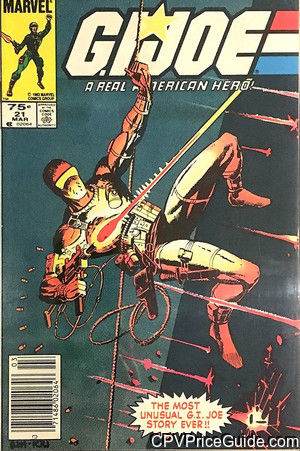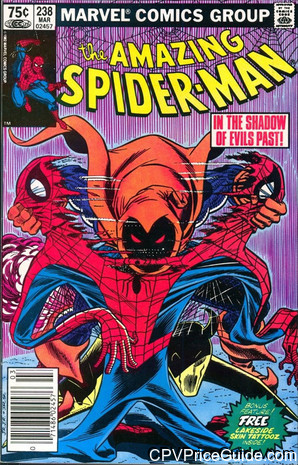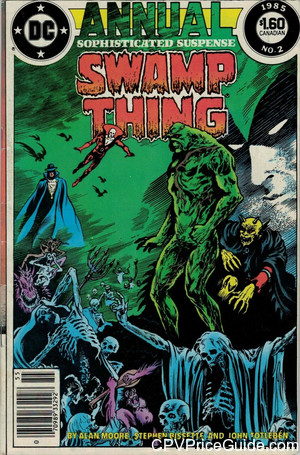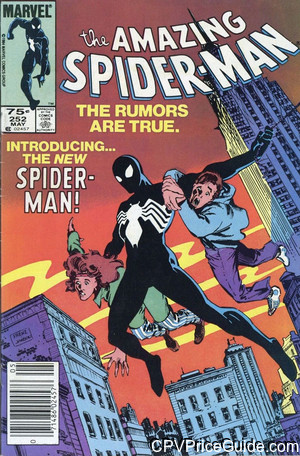By James Gilbreath, CPV researcher and comic historian/contributor, on Instagram @cpvkingcomics, December 2020
“The CPV window was open for a considerable period of time and encompassed an incredibly fertile period of game changing imagination and innovation in the industry. There are so many keys to choose from during this era, a more detailed examination is called for.”

Let’s face it tigers, you want to hit the jackpot. If you were just looking for that run of the mill, standard copper key to stuff in your stacks, there are legions to chase. They are easy to find in grade and still quite affordable. But if you are looking for wiser investment choices and bigger payoffs with your hard earned dollars, CPV collecting might be your golden ticket.
There are many different factors to consider when investing money into a copper book. What will rise tomorrow? What has peaked today? How high is the ceiling and how low is the floor? A savvy collector must weigh many different data points if they want to cultivate and grow that cheddar tree. I have broken down the methodology I use when acquiring Type 1A price variants below, but the weight that should be placed on these variables, is all up to you.
The CPV window was open for a considerable period of time (for DC for instance, between 10/82-10/88) and encompassed an incredibly fertile period of game changing imagination and innovation in the industry. There are so many keys to choose from during this era, a more detailed examination is called for. In order to make sound choices, you need to do your homework first. Know your CPVs, as they are not all created equal.
When perusing and pursuing potential new stock, I tend to break down each new candidate using three basic categories; Greater, Lesser and Least concerns.
• Greater concerns
Comic importance –
Am I looking at a key issue? Is it a major or minor key? Are we talking about the first appearance of The Hobgoblin or the origin of The Peculiar Purple Pieman of Porcupine Peak? Is it somewhere in between? Adjust your dollars for the keys that holler.
Actual grade –
CPVs in high grade (above 9.0) are far more scarce than their standard priced brethren, but lesser grades are more abundant and shouldn’t be considered rare. Don’t waste your money on lower grade copies as they currently don’t carry all that much more value than a similarly graded regular edition would. I only consider grades above 9.0 truly worth investing in, although a select few are worth a look at 8.0-9.0. (I’m looking at you G.I. Joe 21 and Swamp Thing 37.)As with any collectible issue, a 9.8 grade on any CPV major key will command super premiums when they can be found. (ASM 238 9.8 recently realized a staggering $7,800).
The CPV market differs from the standard copper market in the fact that there are quite a few big key books that don’t have a single 9.8 on the census. There are several that don’t have a 9.6 registered to date. For hunters of the very highest grades, it is even more sobering that CGC has been tracking these price variants for nearly 20 years, and in more than a few instances, a 9.4 still tops the census.
• Lesser concerns

Is it slabbed? Is it raw?
While selling a slabbed book is always more liquid and commands a higher price, when buying, be aware that you will also be paying that premium over a raw copy. When buying raw, always consider pressing and grading costs you may incur later. If you have a good eye and find a seller that grades conservatively, buying raw and grading yourself can yield huge gains. While there is risk involved, many of my greatest scores were obtained by a well researched roll of the dice.
Title popularity –
Are you contemplating a stack of Tecs or a run of Muppet Babies? While the latter may be awesome, the former commands more eyeballs. Spiderman may be boring to you, but in the world of ROI, Mr. Parker is a blue chip baby riding a flaming golden dragon. Ride with the Batman, not The Blue Devil. Rule of thumb, if it’s a core Marvel or DC title, it’s probably a safer bet (financially) over a more eclectic series. (Key issues ignore this rule.)
Franchise potential/
Likelihood of licensing–
Census numbers –
I always like to check CGC’s CPV census numbers against the regular editions. Since Canadian Price Variants have been separately tracked by CGC on census for nearly twenty years, I find it a useful tool for measuring currently known copies vs. their counterparts while also helping to approximate ratios existing in the wild.

• Least concerns
Production date –
This one is quite straight forward. Newsstand proportions vs. their direct edition counterparts changed dramatically during the 80s. It wasn’t a 50/50 split until around 1986 when direct editions started to increase in frequency and outpace the barcodes. Simply put, CPVs from late 1988 are tougher than those from late 1982.

Collector base –
Whether it’s the oft read Swamp Thing Annual 2, the never read Crystar 9, or the over played with Smurfs 1, who collected the comic does actually matter. Marvel’s Star Comics line in particular was made for younger readers. Those comics in high grade can be surprisingly difficult to find because little Billy is a straight up slob and has poor muscle control. Being a father myself, I know that dirty rug rats can’t be trusted with anything nice, including legit CPV Star Wars books (Ewoks, Droids).Title print run –
Looking up the printed circulation statement in the indica of a comic (until early 1988 when they stopped getting reported) is often a good metric for determining approximate run size. I use this as my baseline number in “The Formula”*
Although a great resource, Comicchron.com started recording print runs after the CPV window closed in late 1988 so it isn’t much help here. (It is, however, an invaluable tool for researching into, and identifying, Type 1A Australian price variant scarcity from the 90s.)
A large print run doesn’t necessarily dampen a CPV’s viability. Significant demand for a certain key issue does mitigate the more plentiful stock to a large degree. (ASM 252, TT44, SW 8, and Thor 337 come to mind.)• The final calculation
*The Formula – (Used to Determine survivorship/ approximate copies in existence in the wild.)
CPV production –
This would have been approximately 10% of the US newsstand run (Adjusted for Canada’s population relative to the US during the comics production date.) Hence, for Marvel & DC, that percentage generally would have fallen between 1-7% of the entire run (including direct editions). With newsstand sales declining year by year during the 80’s, the later in the window the lower the CPV percentage.
Sell Through rates –
As per Jim Shooter, Marvel newsstand sell through rates in the mid 80s was approximately 25-35% depending on title. Although DC had a smaller market share, I assume these numbers are fairly consistent across companies. This means 65-75% of the run had their covers torn off and returned for credit on next month’s orders, further diluting the amount of extant copies.
Newsstand attrition –
These newsies didn’t have the advantage of being safely delivered to a comic shop and given a board and nestled in a comfy bag to wait for adoption by a loving parent. No sir, These poor babies had to run the gamut of poorly wrapped twine bundle packaging handled and stocked by minimum wage 7/11 employees into metal spinner racks while avoiding hordes of children and customers waiting in line thumbing through them with their grubby mitts. High grade attrition rates for 1980s newsstands has been placed around 90%. It is estimated that only 1 in 10 sold survives today in grades over 9.0.
Using the above data we arrive at *The Formula. (best guesstimate math)
P-C-A-R =X
Print run – 93-98% (CPV ratio of full run) – 90% (high grade newsstand Attrition rate) – 70% (Returned copies) = x.
X = approx total survival rate above 9.0.
It’s not a perfect mathematical formula, and it never could be, with all the variables being estimates and approximations. Predicting survivorship is not an exact science, it is merely good guesswork. This formula is just another tool you can use to help identify CPV scarcity. My hope is that one day, it ends up giving somebody some insight they needed to help recognize a great deal.
• Bonus Points
Scour the listings –
There is still a contingent of people out there that still have not recognized CPVs as anything unique. So always keep your eye out for mis-listed books!
Prayers up and chin up to my comic people after a long 2020. May the new year soon find you, and find you well.
James Gilbreath (@cpvkingcomics)

